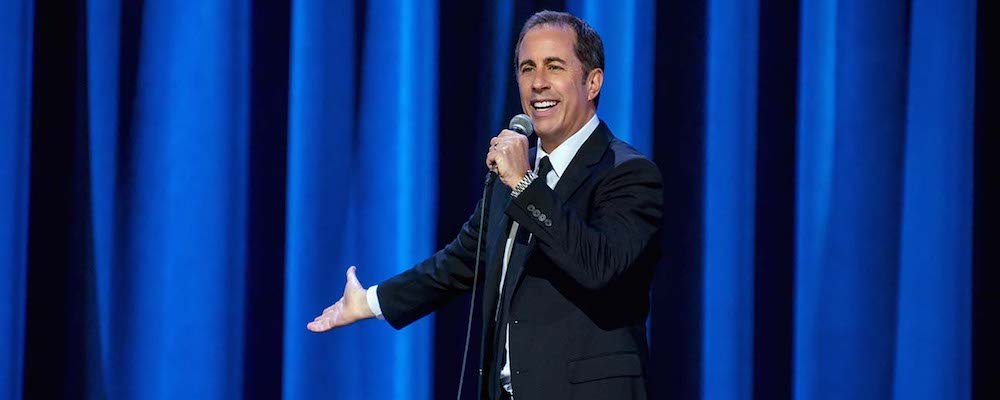Jerry Seinfeld Returns to His Natural State With ‘23 Hours to Kill’
Sandra Miska
With all of his wealth, Jerry Seinfeld could very easily live out his days on a tropical island, or anywhere else in the world, and never work again. However, there’s a drive inside of him. “If you were me, would you be here hacking out another one of these?” He asks in the opening of his first stand-up special in 22 years, “Jerry Seinfeld: 23 Hours to Kill.” “….Nonetheless, I am thrilled to be here.”
Seinfeld may be the host of “Comedians in Cars Getting Coffee,” but he chooses an alternate mode of transport to get to New York’s Beacon Theatre. In an ode to James Bond, the comic leaps out of a helicopter into the Hudson River. Despite this opening stunt, the rest of the special is pretty no-frills, just the man in his natural state, wearing a tux, telling jokes onstage.
During the one-hour special, the man who once ruled the airwaves with his “show about nothing” makes observations about a number of everyday things and institutions, including cell phones, Porta Potties, and marriage. Now 66, Seinfeld, in recent years, stated that he doesn’t play college campuses anymore due to what he perceives as younger audiences being too politically correct. However, one would be hard-pressed to find anything truly offensive in this latest special, as he stays away from politics or anything remotely controversial.
Seinfeld may have a gazillion dollars, but he still relates to his audience with his “funny because it’s true” style of humor. He spends a good chunk of time going on about how our dependence on cell phones has transformed how we interact with each other. Seinfeld isn’t the first comic to find humor in the smartphone takeover, but he offers some amusing mental images. So connected are we to our phones that when their batteries die, we feel as if our own life force is being drained. He also likens mobile devices to pimps, at least when it comes to Uber drivers, as the phone tells the driver where to go and handles the money.
Perhaps the funniest part of the special is when Seinfeld jokes about the U.S. Postal Service, of all things. “They always have this emotional, financial meltdown every three and a half years, that their business model from 1630 isn’t working anymore.” The bit is pretty prescient, as the current global pandemic has put the USPS into a state of crisis. The comic also tackles another institution that mostly will not survive in a post-Covid-19 world, and that is buffet-style restaurants. He finds humor in diners’ utter gluttony in these joints, pointing out that one would never consume the same array and volume of food under any other circumstances.
Seinfeld devotes the last third of the special to discussing marriage, and this is where he most likely loses younger viewers. Although he mentions his “issues” during his bachelor days, he doesn’t dig deep or make any mention about the fact that his wife was still married to someone else when they first met, something he’s joked about in the past, or make any direct reference to any past relationships. Instead, he makes evergreen observations about the differences between the sexes and how husbands and wives communicate with each other, not exactly groundbreaking material.
All in all, “23 Hours to Kill” is an enjoyable watch and treat for fans. However, younger comedy fans who really want to get to know the comedian who inspired the likes of John Mulaney and Issa Rae would be better off viewing old “Seinfeld” episodes and specials.
“Jerry Seinfeld: 23 Hours to Kill” begins streaming May 5 on Netflix.

